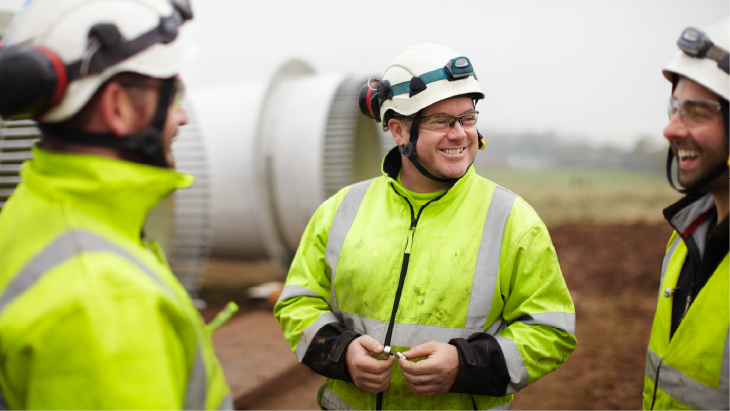How we can use data to improve inclusion for the LGBTQ+ community in construction (Pride, Building Futures)
4 min read | Phil Jackson | Article |

Whilst the CIOB reports that there have been noticeable advancements in DE&I in the construction industry, an overwhelming 60% of LGBTQ+ employees say they have experienced homophobic and derogatory terms at work. This means room for improvement remains. And as part of Hays’ Building Futures: Career Conversations series – we spoke to Luke Ives, ED&I Manager at Arup about the importance of inclusion in the overly male-dominated, mostly hetero-normative industry.
What more can be done?
According to Luke, actions can be put in place using DE&I data to “interrogate your recruitment strategy and approach to certain underrepresented groups falling down at a certain stage of your application process or selection process. You can then start to put in solutions to fix that and then start to look at this diversity and get it to talk to other elements of your employee life cycle.”
Luke himself has experienced this in a previous organisation he worked at. As part of the Career Conversations series, Luke explains that, in a previous role, “a colleague said to me, you do know, because of your sexual orientation, you would have to work twice as hard in this industry.” This spurred him on to work towards breaking down the barriers faced by the LGBTQ+ community in this industry.
Exit interviews can also be an effective way for employers to see if certain demographics are feeling pushed out or are facing microaggressions, but what action can be taken before it reaches the point of an exit interview? Luke is Chair of Building Equality; an organisation that drives LGBTQ+ inclusion in the industry. They developed an award-winning LGBTQ+ inclusion toolbox talk, which has already been utilised by hundreds of organisations. They’ve made the talk free and readily available, so anyone can access it and implement it into their inclusion training to ensure a positive working environment for LGBTQ+ workers.
Inclusion can boost productivity and reduce employee attrition
Benefits of inclusion in the construction industry include increased productivity and retention, less money spent on replacing staff, and generally showing you as an employer who values their employees. Furthermore, underrepresented groups widen the talent pool when hiring for new positions, helping to mitigate against the skills shortages the sector is experiencing.
Use data to inform and improve DE&I
To make improvements in DE&I, we need to have the data to understand where the key issues lie. DE&I surveys of current employees are a great way of obtaining valuable insights into which demographics are underrepresented. This is already being utilised by many employers to help them understand what demographics they are attracting and hiring. However, it’s important that the necessary action is taken as a result of the findings.
What does the future hold?
It’s clear that there have been significant improvements to the inclusion of underrepresented groups in the construction industry, however there is still work to be done. By educating the workforce – using valuable tools such as those offered by Building Equality – we can continue to make strides towards a more inclusive future for the construction industry.
Take a look at our Building Futures: Career Conversations series, where you will find valuable insights from leaders in the construction and property industries, including Luke. They discuss how the industry can improve DE&I, the social purpose of the industry, and sustainability.
About this author
Phil Jackson
UK&I Director for Construction, Hays
